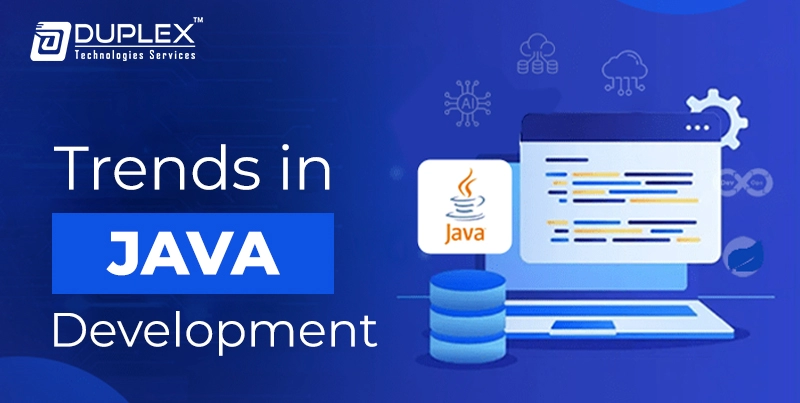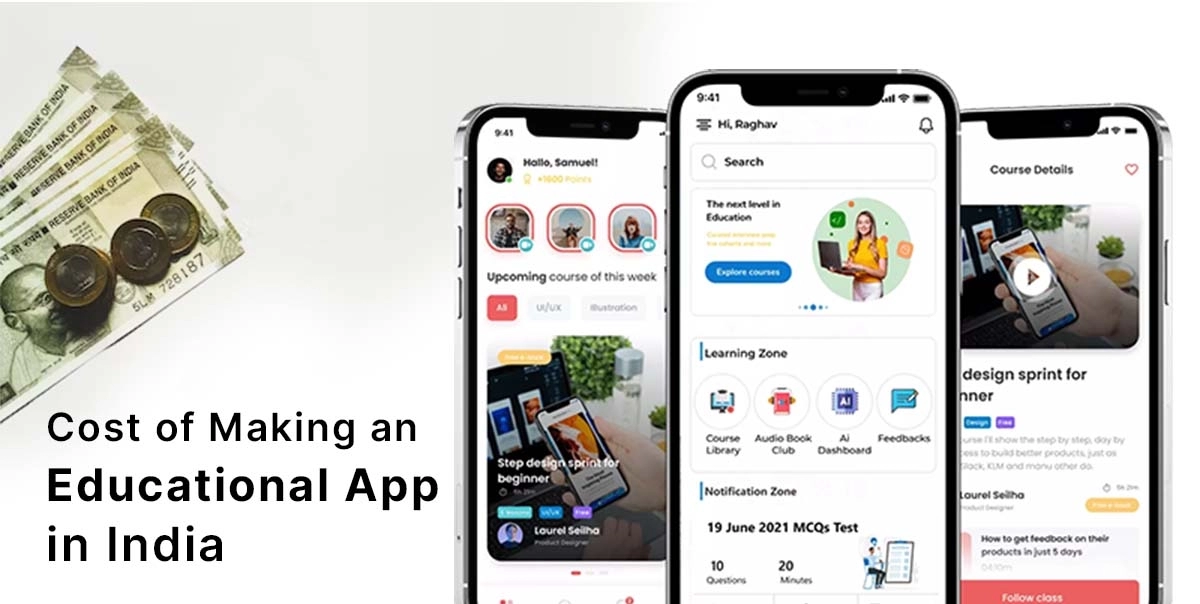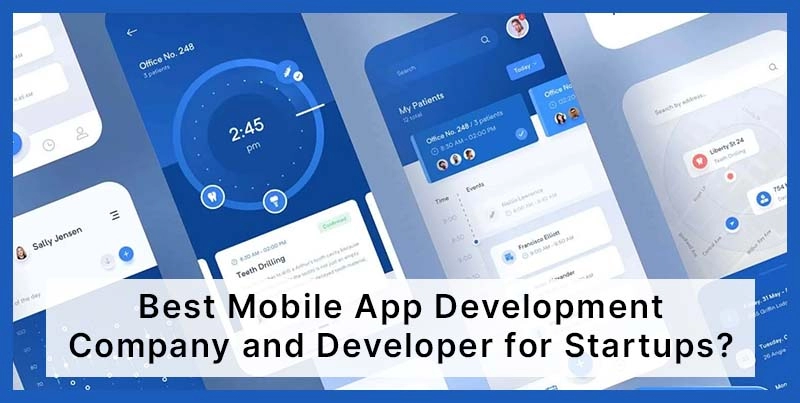Latest Trends seen in Java Development

Posted By : Deepank Joshi, Posted Date : Sep 21, 2024
Latest Trends in Java Development
Java is perhaps the most established stronghold of enterprise applications in the ever-changing world of software development. At Duplex Technologies, we have been working with Java for several years and are excited to share our insights regarding the latest Java trends that will shape its future, be it cloud-native applications or artificial integration. Let's dive into the most important Java development trends defining the way forward for Java developers and businesses.
Table of Contents
The Rise of Cloud-Native Java
On the whole, cloud computing has revolutionized how applications are developed, deployed, and scaled. Java, with its "write once, run anywhere" philosophy, is best suited to these environments. It is inescapable that Java development trends are veering toward being cloud native. Frameworks and tools now are specifically designed to optimize Java applications for the cloud.
Spring Boot is one of the fast-emerging players in this space and has streamlined how one can approach building stand-alone, production-grade Spring-based applications. Its ability to directly embed Tomcat, Jetty, or Undertow negates the need for WAR file deployments, making it ideal for microservices architecture.
Another emerging player is Quarkus, sometimes called "Supersonic Subatomic Java." Optimized to run extremely efficiently in a container-based environment, such as Kubernetes, Quarkus features impressive start-up times along with low memory usage-two historic criticisms of Java.
Serverless Java is also becoming popular. AWS Lambda currently supports Java runtime, enabling developers to write serverless functions in Java. It opens new avenues for event-driven architectures and the pay-per-use model, which can significantly reduce the cost of operation.
We expect that going forward, the adoption of cloud-native features such as auto-scaling, self-healing, and distributed tracing will see much greater adoption in Java applications. The ecosystem for Java is quickly pushing toward making all these capabilities available to developers, while ensuring that Java becomes the first and foremost choice for applications in the cloud.
Embracing Microservices Architecture
In recent years, the microservices architecture pattern has gained quite some popularity, and Java was not too slow to catch up. This architectural style, where applications are built as collections of loosely coupled services, brings improved scalability, easier maintenance, and the ability to use different technologies for different services.
The nature of the ecosystem in Java is highly supportive of microservices. Spring Boot together with Spring Cloud provides almost perfect tool support for the development of the microservices-based applications. Out of the box, it will deliver features such as service discovery, distributed configuration, and circuit breakers.
Another framework that is popular in the microservices world is MicroProfile, which is actually designed for enterprise Java microservices. This is well adapted to building cloud-native applications using APIs and technologies of their own.
With the growth of microservices, we are increasing inter-service communication pattern focus. gRPC is fast becoming one high-performance RPC framework that is gaining efficiency for service-to-service communications. The maturity of its Java support along with proper documentation makes it a strong candidate for microservices implementation.
In fact, the adoption of microservices architecture brings a lot of problems, such as how data will be dealt with or transactions occur between different services. For that reason, we notice an increasing interest in patterns such as the Saga pattern for distributed transaction handling and technologies like Apache Kafka in the design of event-driven microservices.
We have assisted a number of clients at Duplex Technologies in adopting microservice architectures and realized much more agile development processes and easier scaling of applications. This new trends in Java development will intensify as we are going to experience highly sophisticated tools and patterns that will be developed to make microservices development in Java easier and more agile.
The Integration of Artificial Intelligence and Machine Learning
The terms AI and ML are no longer simply buzzwords and are here to stay as a part of most applications. Java, with the strength of its ecosystem and high performance capabilities, is well-positioned to help integrate AI and ML.
One of the more exciting trends in this area is the increasing number of Java-based ML libraries. For instance, there's the distributed deep learning library for Java called Deeplearning4j, where developers can compose deep neural networks with various layers and build scalable applications.
The now not-so-open-source ML library TensorFlow from Google now offers Java bindings. As a result of this, Java developers can actually hook its very powerful capabilities right into their Java applications. It thus further unlocks the integration possibilities of high-end ML models into enterprise Java applications without the services of a separate Python layering.
We also see trends that are pushing towards more accessible AI for Java developers. For example, H2O.ai has an open-source machine learning platform that seamlessly integrates into Java, which, with relative ease, can be built and deployed as ML models by developers.
In all these applications, we believe there will be extensive use of predictive analytics, natural language processing, and computer vision if Java continues to gain its way into more usage.
However, at Duplex Technologies, we have already begun to brainstorm innovative ways in which the applications of their clients' could be even more powerful with AI-driven features ranging from chatbots to predictive maintenance systems and so much more.
The influence of the convergence of AI and Java also lies in the
. Code completions by AI and even bug detection are getting more complex and will eventually lead to a leap in the productivity of developers and quality of their code.
Reactive Programming: Handling Concurrency and Scalability
This paradigm of reactive programming has emerged as one of the powerful paradigms for creating responsive, resilient, and scalable systems for high concurrency, high-volume applications of real-time data. Its future significance in Java is also contemplated with evolution for better support to reactive programming, which is again an ongoing trend.
Java 9 is the one place where Stream API in Java brings in one of the most important steps toward the standardization of reactive streams in Java. It offers interfaces for asynchronous, non-blocking back-pressure programming on streams of data.
Project Reactor has been one of the most widely adopted solutions if developers need reactive applications, close relative to the Spring ecosystem. Operators are available in large numbers for building asynchronous sequences, and it's easy to include Spring WebFlux into building fully reactive web applications.
Another extremely popular library is RxJava, though more advanced Android applications are still very broadly adopting it. It is really widely used, at least in Android development, in terms of bringing rich operators and dealing with synchronous and asynchronous streams of data.
We are also seeing more adoption of reactive databases and reactive database drivers. MongoDB, for example, provides a reactive streams Java driver; this allows one to get rid of blocking database operations, they are perfectly fitting in with reactive application stacks.
At Duplex Technologies, we leveraged reactive programming, and our highly concurrent applications could easily support thousands of simultaneous connections at very low resource consumption. Going forward, with the increasing demand for real-time high-performance applications, we can see reactive programming in Java being used much more widely.
Modern Java Language Features and JVM Improvements
Java as a language has progressed further, and more features have been added to the language to make it even more expressive and productive. Rush into a six-month release cycle accelerated improvement delivery, bringing more abilities to developers' hands in shorter time intervals.
Important New Features in Recent Java Versions include:
Pattern matching for instance, in (Java 16) and switch (Preview in Java 17) simplify conditional logic and make the code more readable.
Looking ahead, we are excited very much about trending Java technologies like pattern matching for switch statements and deconstruction patterns. This will surely make Java code concise and expressive.
Not as palpable, though no less important, are enhancements to the garbage collection algorithms on the JVM front, which incrementally further improve Java performance. Low-pause time collection by the Z Garbage Collector (ZGC) and Shenandoah GC will prove essential for latency-sensitive applications.
We are also watching Project Loom, which is meant to give Java lightweight threading. This promises to bring about a revolution in concurrency within Java so that developing highly concurrent applications shall be easier without much ado over manual thread management.
But these improvements in JIT compilation and this experimental Graal compiler are moving the limits for Java performance. These new features particularly take on more important meaning in how Java competes with natively compiled languages within these very performance-critical domains.
At Duplex Technologies, we welcome these new features and improvements of JVM to help us write cleaner, more efficient code and build even more performing applications for our customers.
Get in touch with Duplex Technologies at +91-9452000089 to hire a Java Developer
We at Duplex Technologies are excited to see these current trends in Java technology. We keep updating our practices all the time to leverage these trends. Staying at the pinnacle of Java development will ensure we deliver cutting-edge solutions that meet the changing needs of clients.
So, the future of Java development is bright and full of possibilities for innovating and improving. Taking these trends into consideration with further research and adoption, we commit to leveraging the potential of Java to extend beyond what is thought possible: that is, to the development of robust, scalable, secure applications able to drive business success in this digital age.
Contact us today at +91-9452000089 to discuss your project and let Duplex Technologies bring your dream into reality.




















































































